Carretera Austral Norte + Chiloe
- Home
- Rutas
We share a route that contemplates the northern part of the Carretera Austral and Chiloe, starting and ending in Puerto Varas. The southern highway is probably the favorite destination for many tourists who travel by camper and want to visit the most beautiful corners of Chile, and here we share a version to do a “round trip” from Puerto Varas.
The southern highway is a scenic route in Patagonia and unique in the world. More than 1,200 kilometers of natural beauty await you in the south of the world. The Carretera Austral falls in love with all those who visit it by car or bicycle, with pristine landscapes and an air that only those lucky enough to know this route can breathe.
Owner of an enormous diversity of landscapes, it is ideal for practicing adventure sports. Go rafting down the Futaleufú River, one of the most renowned on the planet for this discipline. Get to know the corners of this place touched by the magic wand with one of the many existing trekking routes and discover the incredible Palena National Parks and all the charms of Green Patagonia.
Combine this journey with a visit to the glaciers that adorn one of the last corners of the world. You will be surprised by Caleta Tortel, a town with cypress walkways, a unique landscape in the world.
Hornopiren

From Puerto Varas / Puerto Montt, the first obligatory stop on the Carretera Austral is Hornopiren. It is the gateway to the Carretera Austral, since it is here where you have to take the barges to be able to cross the Comau Fjord, towards Caleta Gonzalo and continue by land.
It is important to reserve the barge from Hornopirén to Caleta Gonzalo in advance at barcazas.cl
Parque Pumalin
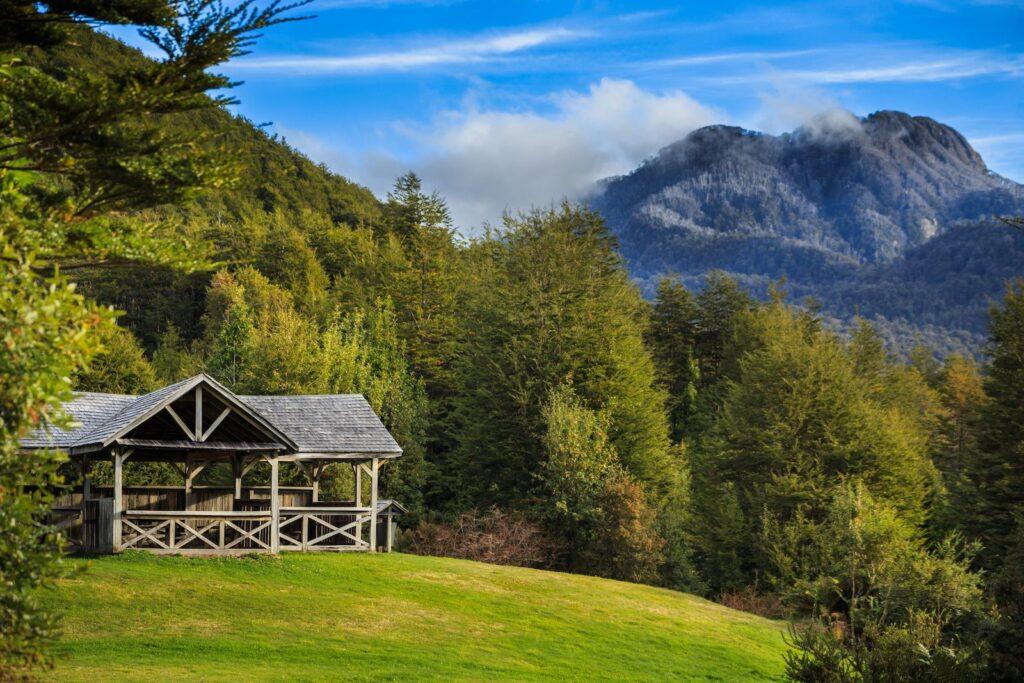
The barge schedule changes sometimes, but they usually leave at 10am from Hornopiren. It must be considered that one arrives in the afternoon at Caleta Gonzalo, the entrance gate of Parque Pumalin.
Here there are several camping options and some must be reserved in advance.
Almost unexplored by man, these areas of temperate rain forest were declared a Nature Sanctuary. Follow its trails suitable for long journeys, practice trekking and canyoning through its fjords, and camp at the foot of isolated secret waterfalls.
Explore the Michimauda volcano on horseback, and delve into its lush larch forests through the paths and wooden bridges that run through the magical place. Sharpen your eyesight, the park is home to a large number of birds ranging from herons and flamingos to imposing condors.
Futaleufú
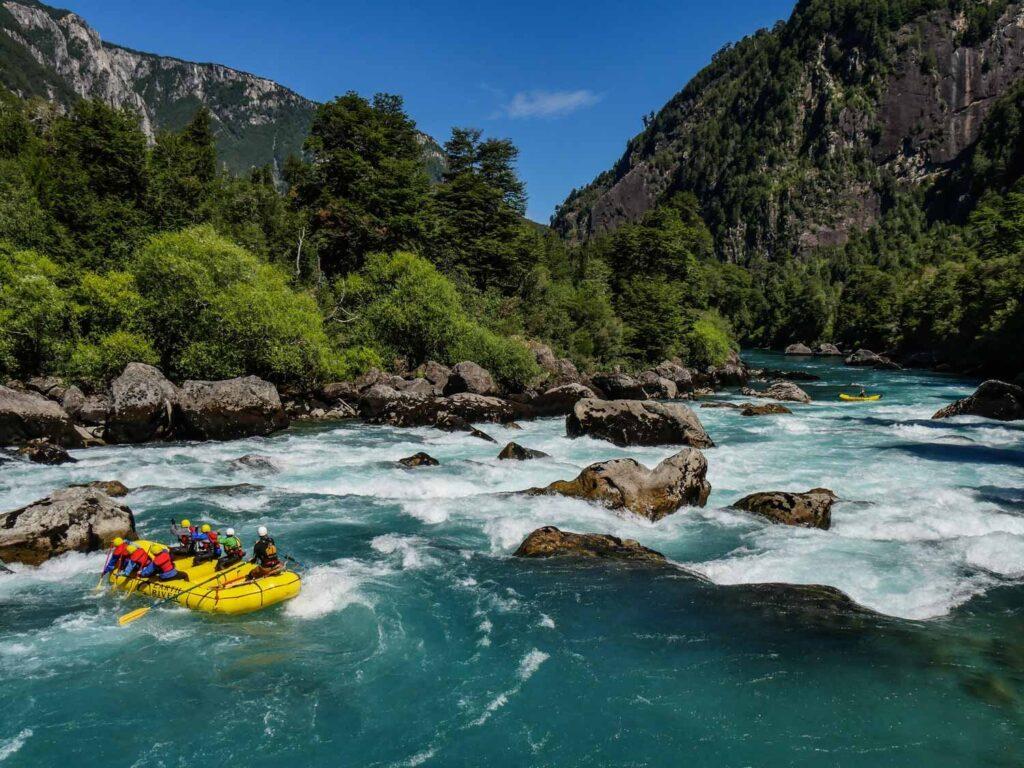
Located in the middle of the Andes Mountains, Futaleufú in the Mapuche language means “big river”. A true paradise for adventure sports, the river of the same name is considered among the three best in the world for kayaking and rafting. Do you dare to challenge him?
If you want quieter activities, you can walk or bike the trails of the Futaleufú National Reserve, which protects two very important species in the area: the mountain cypress and the shy huemul, an endemic deer and national symbol of Chile.
P.N. Queulat
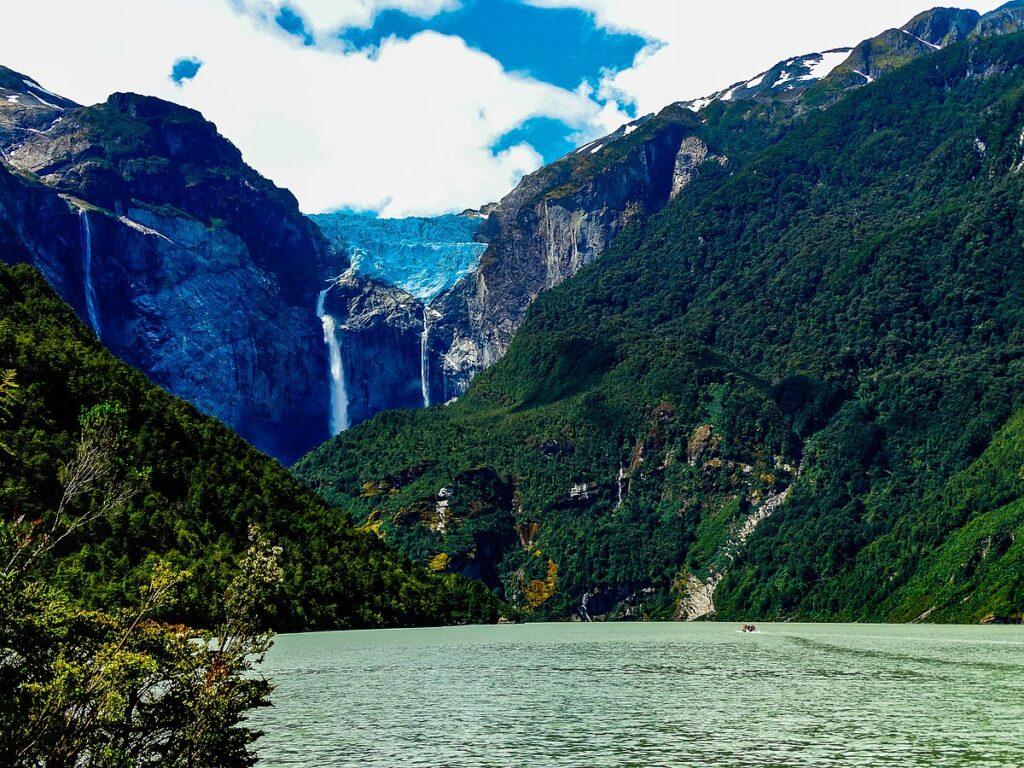
A place where the trees seem to submerge between fjords and channels, where the so-called evergreen forest is born. That is the Queulat National Park.
On the lands that today give life to this protected area, ancient explorers searched among its fabulous surroundings for the mythical “City of the Caesars”, according to legend, a city full of gold that would have been founded by Spanish shipwrecked men. You too can explore this area trekking along its trails surrounded by water and forests.
Let yourself be enchanted by the perfection of the Hanging Glacier, glaciers, lagoons and waterfalls that seduce and allow a space for contemplation to enjoy the calm of these landscapes. If adventure is your thing, don’t miss out on the opportunity to practice water sports such as kayaking and rafting and then relax in the hot springs of the sector!
Lago Yelcho
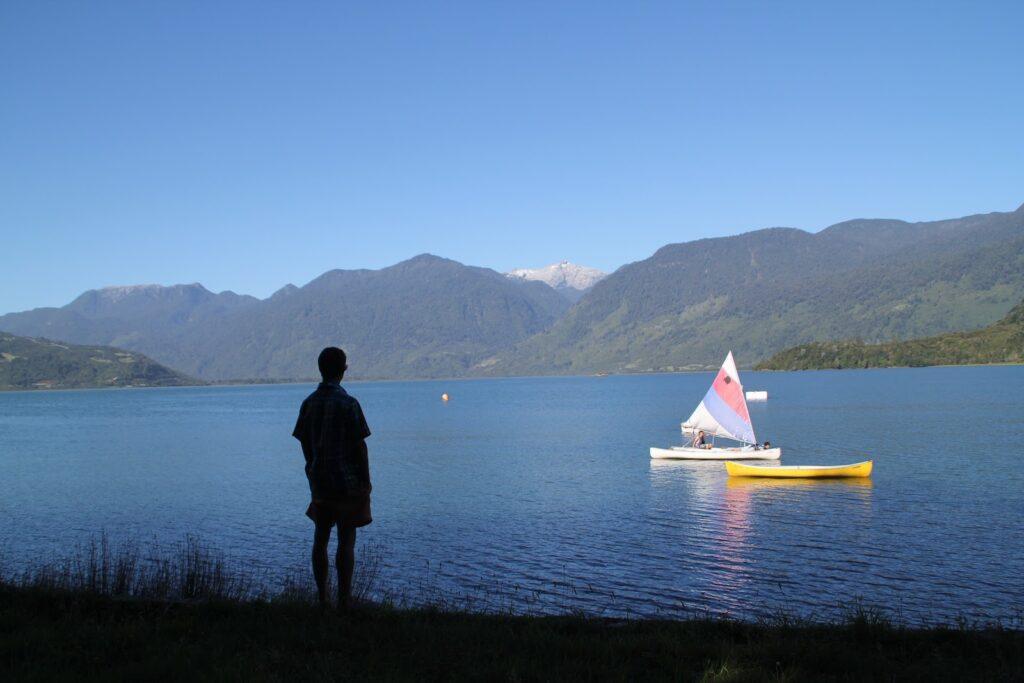
The beauty of the emerald green of the southern waters and the possibility of sport fishing make Yelcho Lake one of the most surprising attractions in the region. Located in Puerto Cárdenas, a little more than 40 kilometers from Chaitén, Lago Yelcho is the right place to practice fly fishing and connect with nature. The purity and charm of the landscape that shelters it, its glacial origin, the barrier of fertile hills, the 70 meters high, the 11 thousand hectares of extension and its prodigious fauna, make it a refuge from nature.
Castro
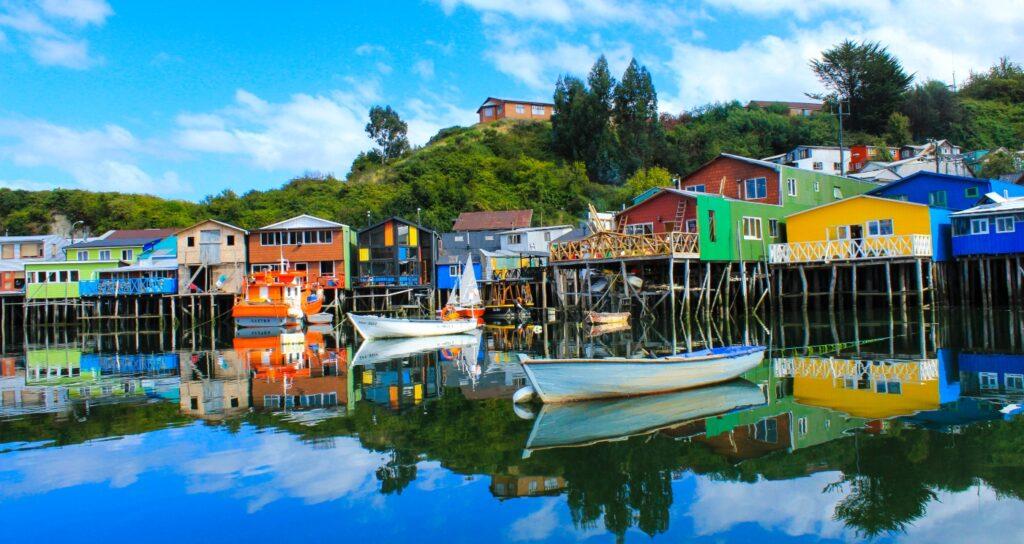
Castro is a city on the island of Chiloé, in the Los Lagos region of Chile. Its coast is lined with colorful wooden stilt houses. In the Plaza de Armas, there is the Church of San Francisco, built at the beginning of the 20th century and yellow in color, with 2 bell towers and a characteristic wooden interior. Nearby is the craft fair where woven baskets are sold. The Museum of Modern Art of Chiloé exhibits works by Chilean artists. To the west is the Chiloé National Park, which is home to sea lions.
To get to Castro it is necessary to take a ferry from Chaiten that works only on Sundays. The other alternative is to take the ferry to Puerto Montt and drive to Castro.
To book your ferry: navieraustral.cl
Cucao
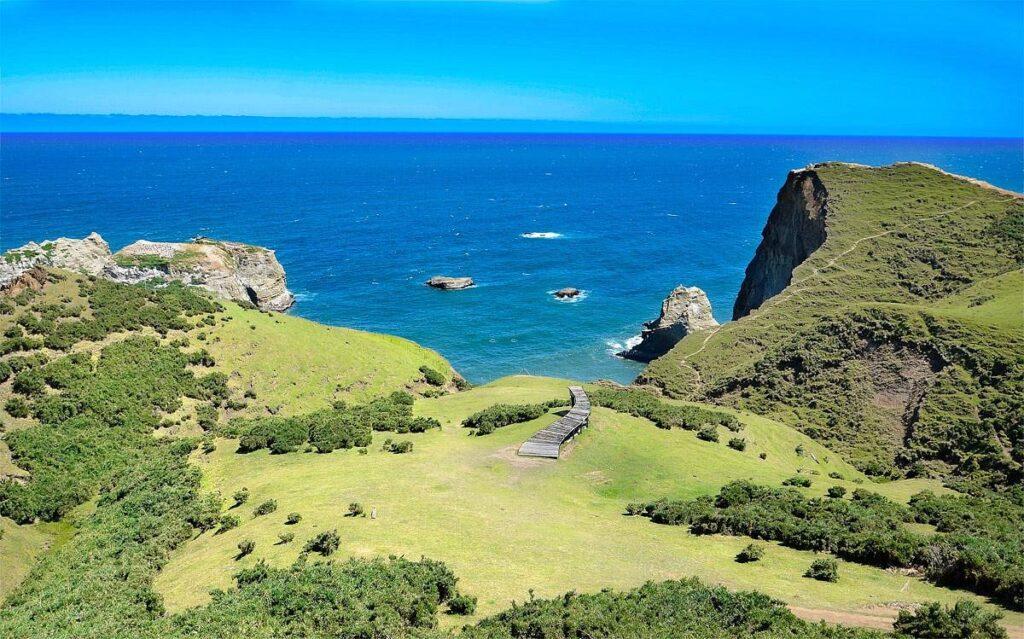
Cucao is a town of about 500 inhabitants on the Isla Grande de Chiloé, in Chilean Patagonia. It is the only town on the western coast of the island and is located about 50 kilometers from Castro and 33 from Chonchi, the capital of the commune to which it belongs.
It is a place surrounded by legends and, in a way, it is also mysterious, since being located on the coast many days is surrounded by mist. There you will find nature in its purest state; In addition to the sea, the strong waves of the Pacific and its extensive beaches, it is surrounded by forests, green meadows and large lakes. Being a small town, it is very quiet, so combining that peace with nature and its bucolic landscapes, the result is a perfect mix to enjoy a few days of relaxation in the open air.
If you are making a route through the archipelago and you do not have many days, but you would still like to visit Cucao, there are tours from Chonchi or from Castro to visit the National Park and the Muelle de las Almas. These tours are for a full day, so they can be an option not to leave without seeing Cucao.
Isla Lemuy
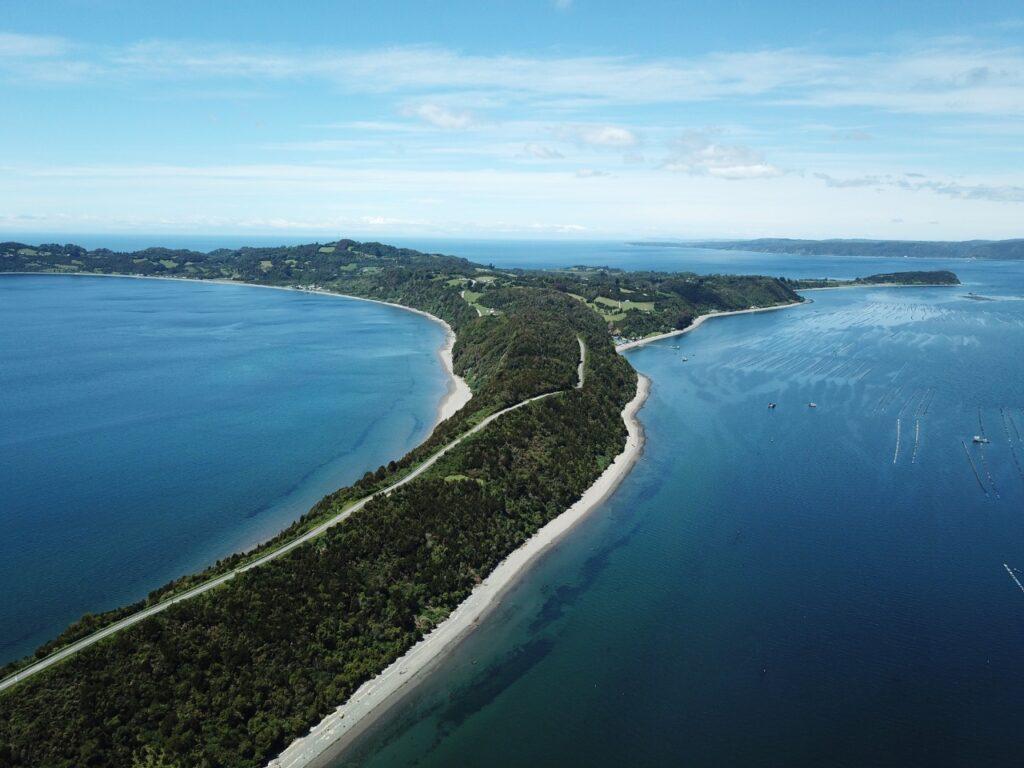
Lemuy Island stands out for its spectacular landscapes and for its 3 churches declared World Heritage Sites: Ichuac, Aldachildo and Detif.
In camper we recommend doing a circuit around Isla Lemuy, one of the islands that make up the Chiloé archipelago. It is accessible by ferry from the south of Castro. It is possible to tour the island in half a day and stay on the island.
Visit the towns, their wonderful beaches, but above all the churches of: Ichuac, Aldachildo, Puchilco and Detif.
Duhatao
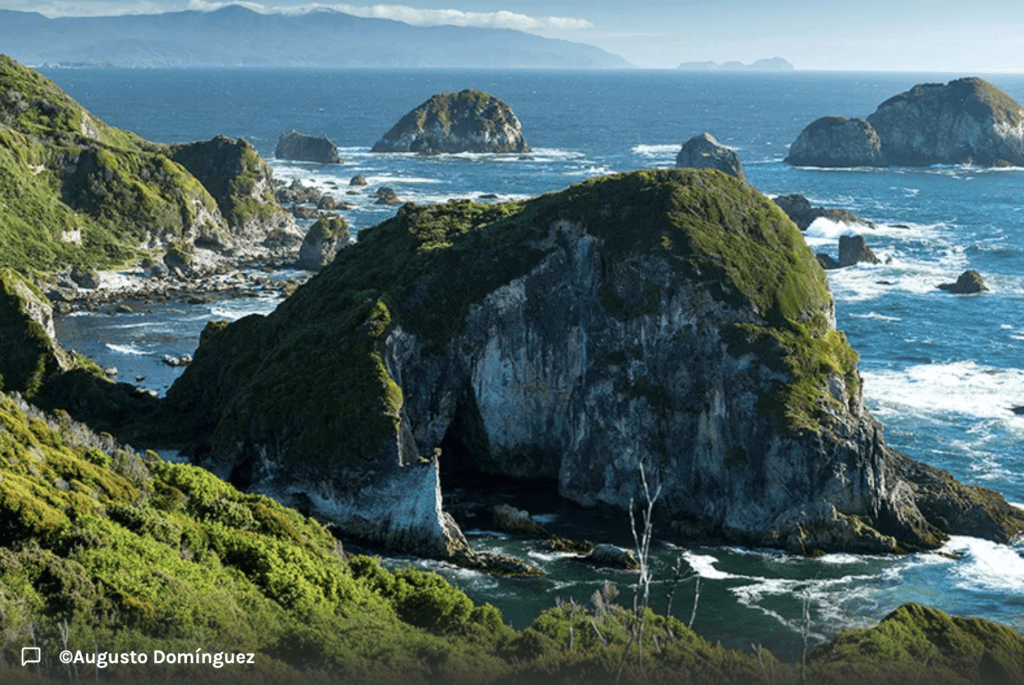
A little more than 30 km from the city of Ancud, is the Duhatao bay, a sector of a privileged environment marked by a past of active volcanism, the erosion of the Pacific Ocean and the presence of practically untouched forests.
In Duhatao, a place with few inhabited places, lots of vegetation and wildlife, where the sound of the ocean gives way to the song of chucaos, fio-fios, rayaditos or hummingbirds.

